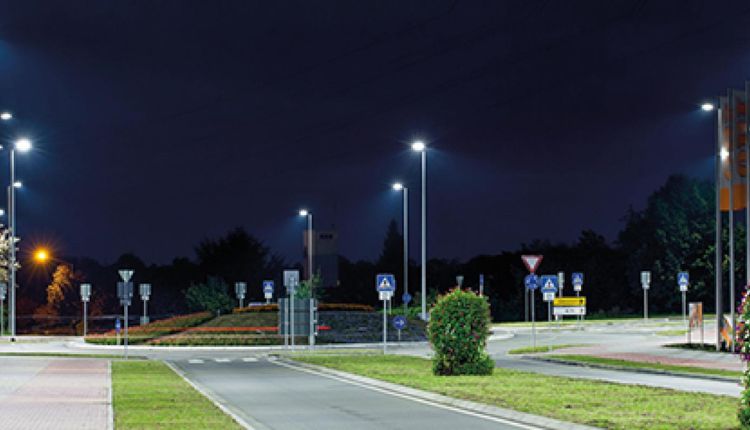In recent years, cities around the world have been embracing smart technology to improve efficiency, sustainability, and the overall quality of urban life. One such innovation making waves in the realm of urban infrastructure is the Smart Pole. These multifunctional poles are revolutionizing the way cities are lit, monitored, and connected. In this article, we’ll delve deep into the world of Smart Poles, exploring their features, benefits, and the impact they are having on our cities.
What is a Smart Pole?
Smart Poles, also known as intelligent poles or smart streetlights, are next-generation lampposts equipped with a range of advanced technologies. These poles go beyond traditional street lighting, serving as hubs for various smart city applications.
Components of a Smart Pole
Smart Poles typically consist of the following components:
1. LED Lighting
- LED lights are energy-efficient and provide better illumination compared to traditional streetlights.
- These lights can be dimmed or brightened as needed, depending on factors such as weather conditions and time of day.
2. Sensors
- Smart Poles are equipped with various sensors, including motion sensors, environmental sensors, and cameras.
- These sensors collect data on factors such as air quality, temperature, humidity, and traffic flow.
3. Communication Equipment
- Smart Poles serve as communication hubs, facilitating wireless connectivity for various smart city applications.
- They can host small cells for 5G networks, improving connectivity and paving the way for future technologies such as autonomous vehicles and smart grids.
4. Charging Stations
- Some Smart Poles are equipped with charging stations for electric vehicles, promoting sustainable transportation options within cities.
- These charging stations can help reduce carbon emissions and combat air pollution.
Benefits of Smart Poles
The deployment of Smart Poles offers a wide range of benefits for cities and their residents. Some of the key advantages include:
Improved Energy Efficiency
- LED lighting used in Smart Poles consumes significantly less energy than traditional streetlights, resulting in lower electricity bills and reduced carbon emissions.
- Smart lighting systems can adjust their brightness based on natural light levels, further conserving energy.
Enhanced Safety and Security
- The integration of sensors and cameras into Smart Poles enhances public safety and security.
- These poles can detect motion, monitor traffic flow, and provide real-time data to law enforcement agencies, helping to prevent crime and accidents.
Environmental Monitoring
- Smart Poles are equipped with environmental sensors that monitor air quality, temperature, humidity, and other factors.
- This data can help city planners make informed decisions to improve environmental sustainability and public health.
Connectivity and Data Collection
- Smart Poles serve as communication hubs, providing wireless connectivity for various smart city applications.
- They collect valuable data on traffic patterns, pedestrian flow, and environmental conditions, helping city planners optimize urban infrastructure and services.
Promoting Sustainability
- Smart Poles support sustainability initiatives by incorporating energy-efficient LED lighting and promoting the use of electric vehicles through charging stations.
- By reducing energy consumption and carbon emissions, Smart Poles contribute to a greener, more sustainable urban environment.
Applications of Smart Poles
Smart Poles are versatile platforms that can support a wide range of smart city applications. Some common applications include:
1. Smart Lighting
- Smart Poles use LED lighting technology to provide efficient and customizable illumination for streets, sidewalks, and public spaces.
- These lights can be programmed to adjust their brightness based on factors such as time of day, weather conditions, and pedestrian activity.
2. Traffic Management
- Smart Poles equipped with sensors and cameras can monitor traffic flow, detect accidents, and optimize traffic signal timings in real-time.
- This data helps reduce congestion, improve safety, and enhance the overall efficiency of transportation networks.
3. Environmental Monitoring
- Smart Poles are equipped with sensors that monitor air quality, temperature, humidity, and other environmental factors.
- This data is used to assess environmental conditions, identify pollution hotspots, and implement measures to improve air quality and public health.
4. Public Safety and Security
- The integration of cameras and sensors into Smart Poles enhances public safety and security.
- These poles can detect suspicious activities, monitor crowds, and provide real-time data to law enforcement agencies, helping to prevent crime and respond quickly to emergencies.
5. Wireless Connectivity
- Smart Poles serve as communication hubs, providing wireless connectivity for various smart city applications.
- They can host small cells for 5G networks, improving connectivity and enabling future technologies such as autonomous vehicles and smart grids.
Smart Pole: Transforming Urban Infrastructure
Smart Poles are transforming urban infrastructure by providing cities with a platform for innovation and growth. With their advanced features and capabilities, these intelligent poles are helping cities become more efficient, sustainable, and connected than ever before.
Conclusion
Smart Poles are more than just streetlights; they are the backbone of the smart cities of the future. With their advanced features and capabilities, these intelligent poles are revolutionizing urban infrastructure, making cities more efficient, sustainable, and connected than ever before. As cities continue to embrace smart technology, Smart Poles will play a crucial role in shaping the cities of tomorrow.

